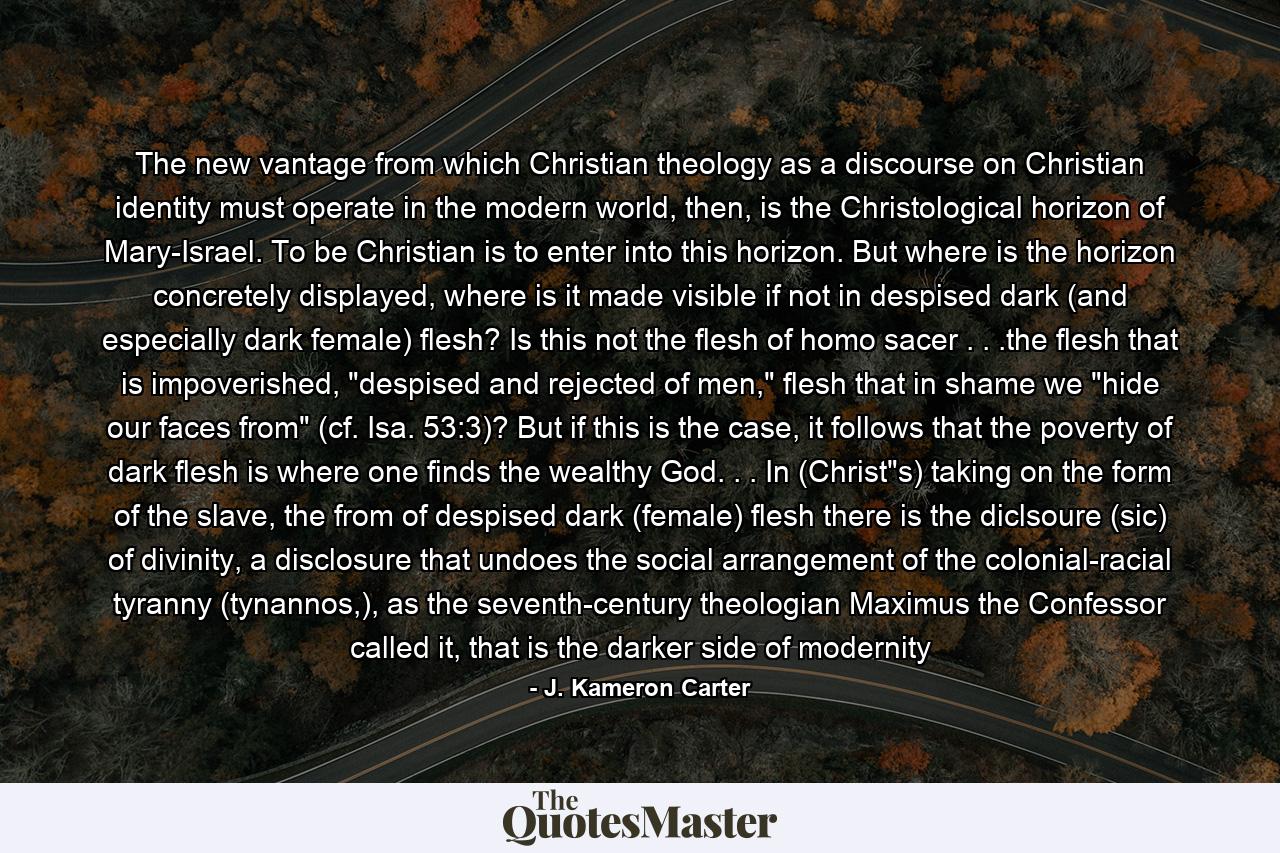The new vantage from which Christian theology as a discourse on Christian identity must operate in the modern world, then, is the Christological horizon of Mary-Israel. To be Christian is to enter into this horizon. But where is the horizon concretely displayed, where is it made visible if not in despised dark (and especially dark female) flesh? Is this not the flesh of homo sacer . . .the flesh that is impoverished, “despised and rejected of men,” flesh that in shame we “hide our faces from” (cf. Isa. 53:3)? But if this is the case, it follows that the poverty of dark flesh is where one finds the wealthy God. . . In (Christ”s) taking on the form of the slave, the from of despised dark (female) flesh there is the diclsoure (sic) of divinity, a disclosure that undoes the social arrangement of the colonial-racial tyranny (tynannos,), as the seventh-century theologian Maximus the Confessor called it, that is the darker side of modernity
